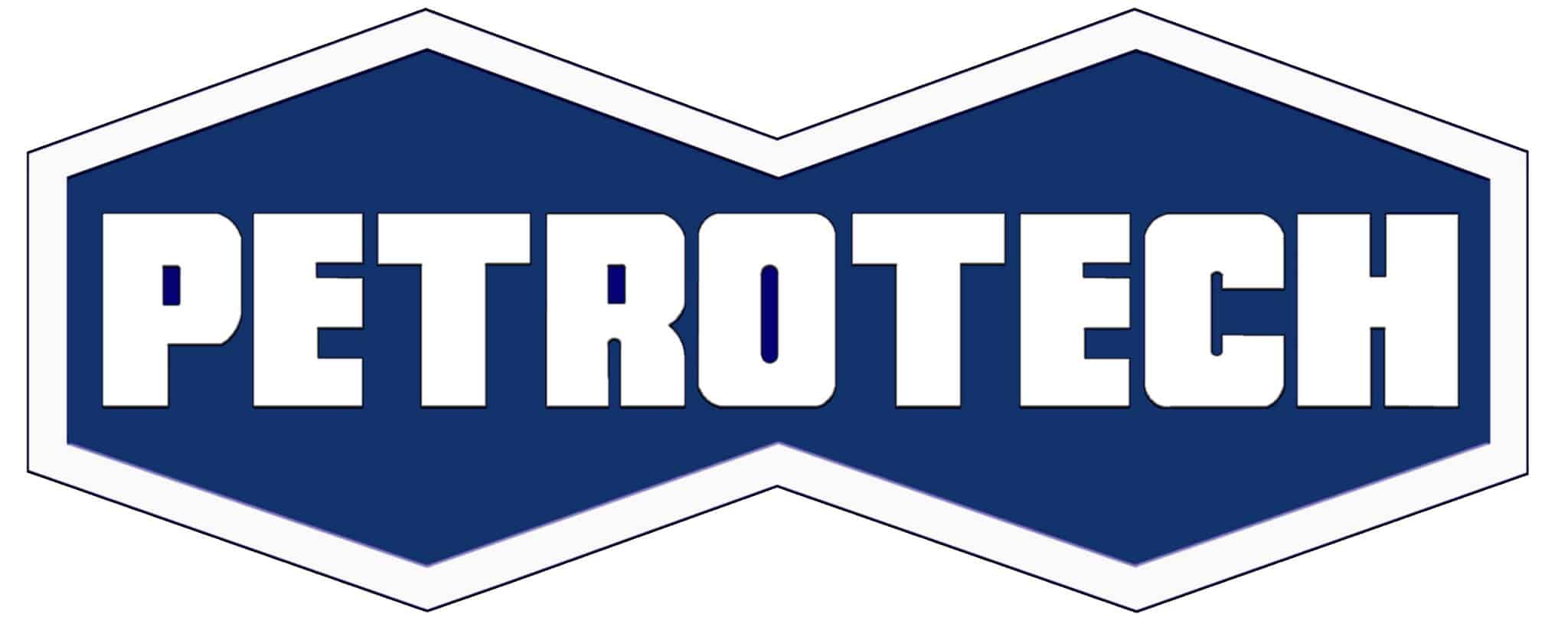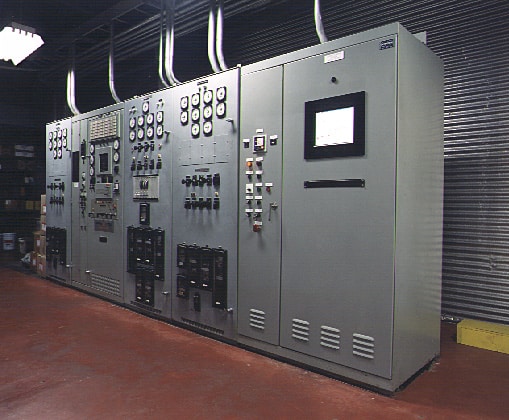
Power Plant Control Systems
In the world of energy production, power plant control systems play a crucial role in managing the intricate operations of modern power plants. These systems, monitor, regulate, and optimize the various processes to ensure the efficient generation of electricity. This article delves into the purpose of power plant control systems, types of controls, and common systems.
Purpose of the Power Plant Control Systems
For the power plant to operate and generate electricity, multiple pieces of equipment, including control systems must work in tandem. Synchronizing the operation requires precise control to ensure the cycle and the equipment and processruns within the specified design parameters. Power plant control systems coordinate plant operations, and ensure the dependable and efficient generation of power.
Types of Controls in the Power Plant
In a contemporary power plant, most of the control operations operate automatically. The control functions can be classified into two basic groups: on-off control and modulating control.
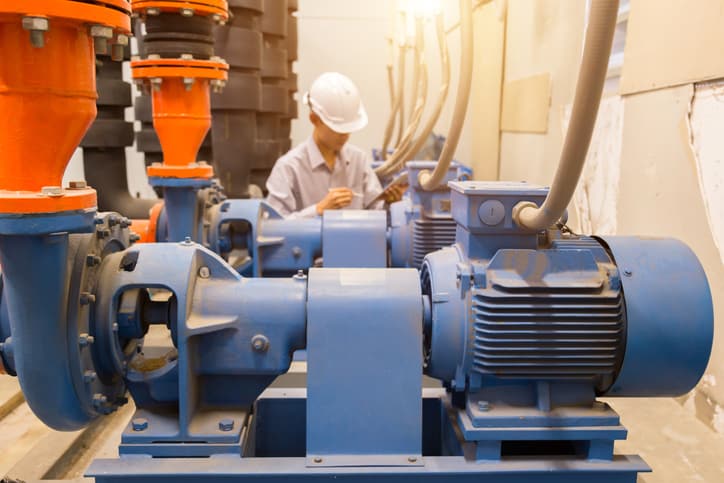
The on-off control generates a control response that fluctuates between distinct conditions. An illustration of this form of regulation involves the initiation and cessation of a motor. The control system generates a begin command or a halt command, and the controlled equipment responds to the prompt by either running or stopping the motor.
Modulating control generates a control output signal that efficiently fluctuates in magnitude between different values. An illustration of this form of control involves the regulation of the flow of oil to a tank by adjusting the position of an oil intake valve in some industrial equipment. Most commonly, modulating control equates to 4-20mA control. The 4-20mA schema allows for a varying degree of current to modulate the control output.
Common Types of Power Plant Control Systems
A power plant control system typically contains different systems which include distributed control systems (DCS), supervisory control and data acquisition (SCADA), IOT systems, safety instrumented systems (SIS), programmable logic controllers (PLC), human-machine interface (HMI), and historian systems. One, some, or all of these systems may be deployed, depending on process design.
Ensuring these systems work together seamlessly provide predictable operation and quick responses to changing circumstances. Seamless integration makes it easier for data to run smoothly, lowering the chance of miscommunication and improving plant performance. Putting DCS, SCADA, Historian, PLCs, and HMIs together demands an efficient power plant control schema to ensure safe, reliable, and efficient processes.
Distributed Control Systems (DCS):
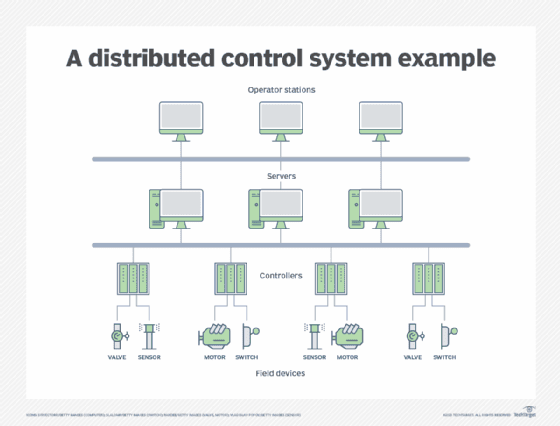
Most power plant control systems employed in large-scale facilities contain a distributed control system (DCS) which is a computerized control system designed for managing a procedure or facility. These are found in large power plants where multiple processes need to be coordinated and controlled centrally. It consists of multiple independent controllers that are spread out across the system, without a central operator supervising management. The Distributed Control System (DCS) idea enhances dependability and diminishes installation expenses by localizing control functions near the process plant while enabling remote monitoring and supervision.
Supervisory Control and Data Acquisition (SCADA):
SCADA, short for supervisory control and data acquisition, refers to a group of software tools employed to operate manufacturing procedures. It entails collecting real-time data from distant places to regulate equipment and states of the system.
SCADA systems consist of both hardware and software components. The hardware portion collects and transmits data to field controller systems, which then relay the data to other systems for processing and presentation on a human-machine interface (HMI) immediately. SCADA systems also document and chronicle all occurrences to demonstrate the status and problems of the process. SCADA applications offer alerts when conditions become perilous by emitting audible alarms.
IoT System
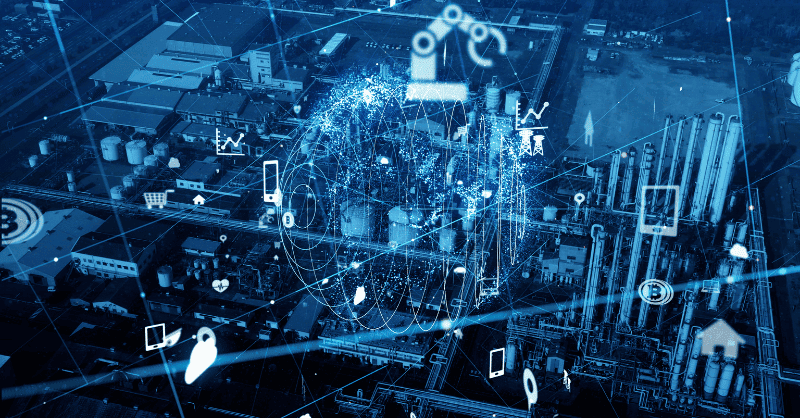
The IoT control system utilizes a microcontroller to analyze the data collected by the sensors and transmit it to a cloud-based application. The IoT system offers up-to-the-minute information on the overall condition of a power generation facility, therefore aiding in plant automation. IoT focuses more on data collection and analysis vs. SCADA which focuses more on machine-to-machine communication.
Safety Instrumented Systems (SIS)
Safety instrumented systems are frequently employed in process facilities such as nuclear or chemical plants, as well as refineries. They safeguard against accidents resulting from elevated fuel gas pressure or increasing reactor temperatures, for example. A Safety Instrumented System comprises sensors, logic solvers, and final control components that bring the procedure to a secure state after breaching of specific conditions. An SIS, or Safety Instrumented System, carries out precise control functions to prevent hazardous process processes in the event of unacceptable or perilous situations. An essential feature of a SIS is its inclusion of instruments that detect when process variables such as flow, temperature, and pressure in the case of a processing facility exceed predetermined parameters.
Programmable Logic Controllers (PLC)
A programmable logic controller (PLC) or programmable controller fits typical use in a small-scale facility or an equipment package that is part of a bigger plant. This specialized computer systems controls manufacturing procedures in industrial settings. It can withstand harsh conditions and controls activities such as assembly lines, machines, and robotic devices. PLCs provide high reliability, ease of programming, and the ability to diagnose process faults.
Human-Machine Interface (HMI)
A Human-Machine Interface (HMI) works well for local components in a power plant control system installed in a small-scale facility. An HMI provides a user interface that establishes a connection between an individual and an industrial machine, or device. HMIs oversee and modify set points, issue commands, and control algorithms, and modify and manage settings in the controller.
Historian Systems
Historian Systems provide high-capacity data storage systems specifically designed to efficiently gather, store, and retrieve time-dependent information at exceptionally fast rates. Historians offer a consolidated and thorough perspective on the performance of industrial processes throughout time in the monitoring and control of such processes. The historian’s role entails the storage and documentation of all the data aggregated by the SCADA system. It enables operators and stakeholders to analyze past data about the plant. A historian may possess the skill to report as well.
In Conclusion
Engineers should take care to understand the needed function of a power plant control system and how to design systems accordingly. Whereas, plant operators must know that power plant control systems typically comprise of a multiple of subsystems. Understanding how each type of control system works together allows operators to better understand and maintain existing systems.
